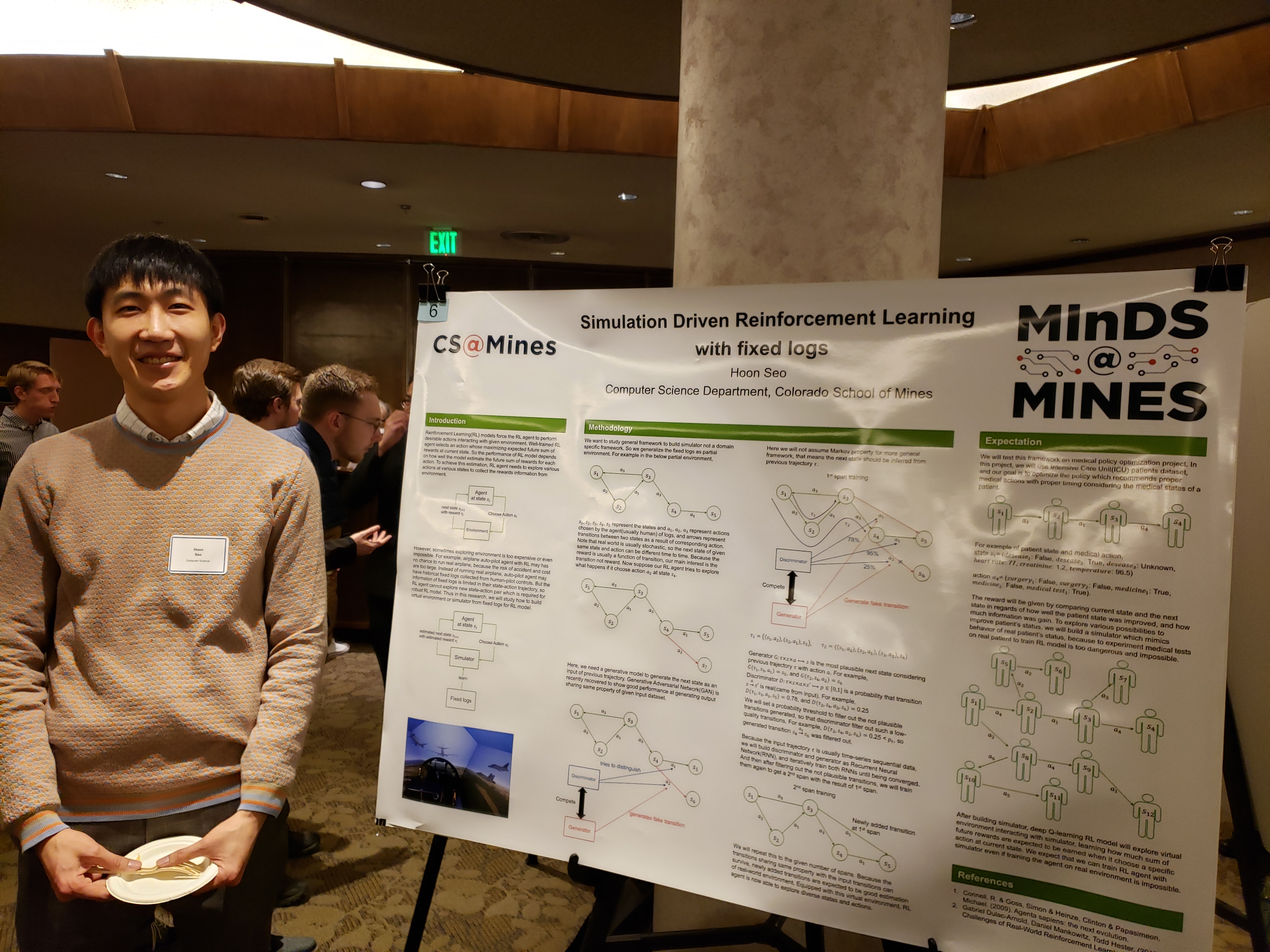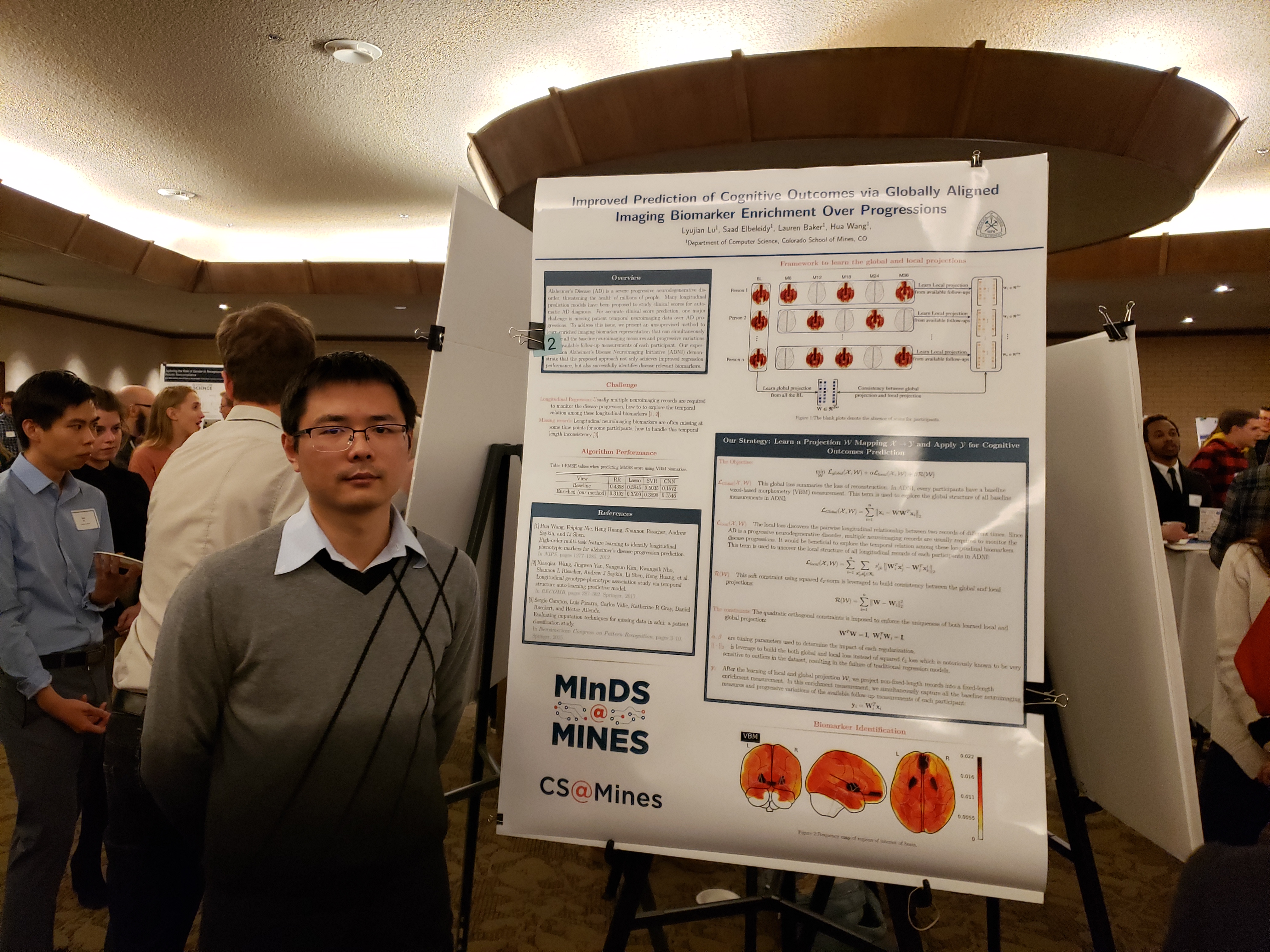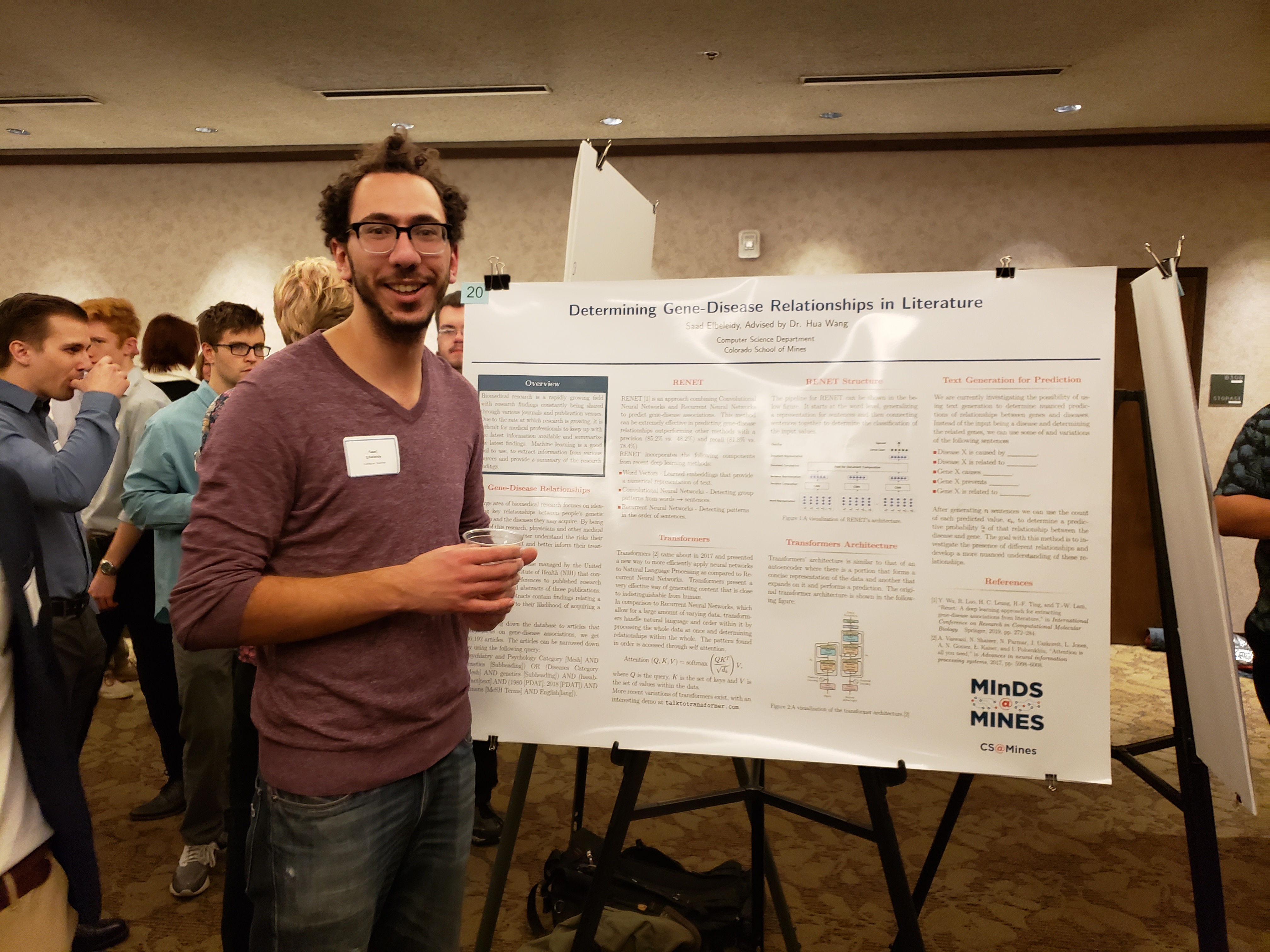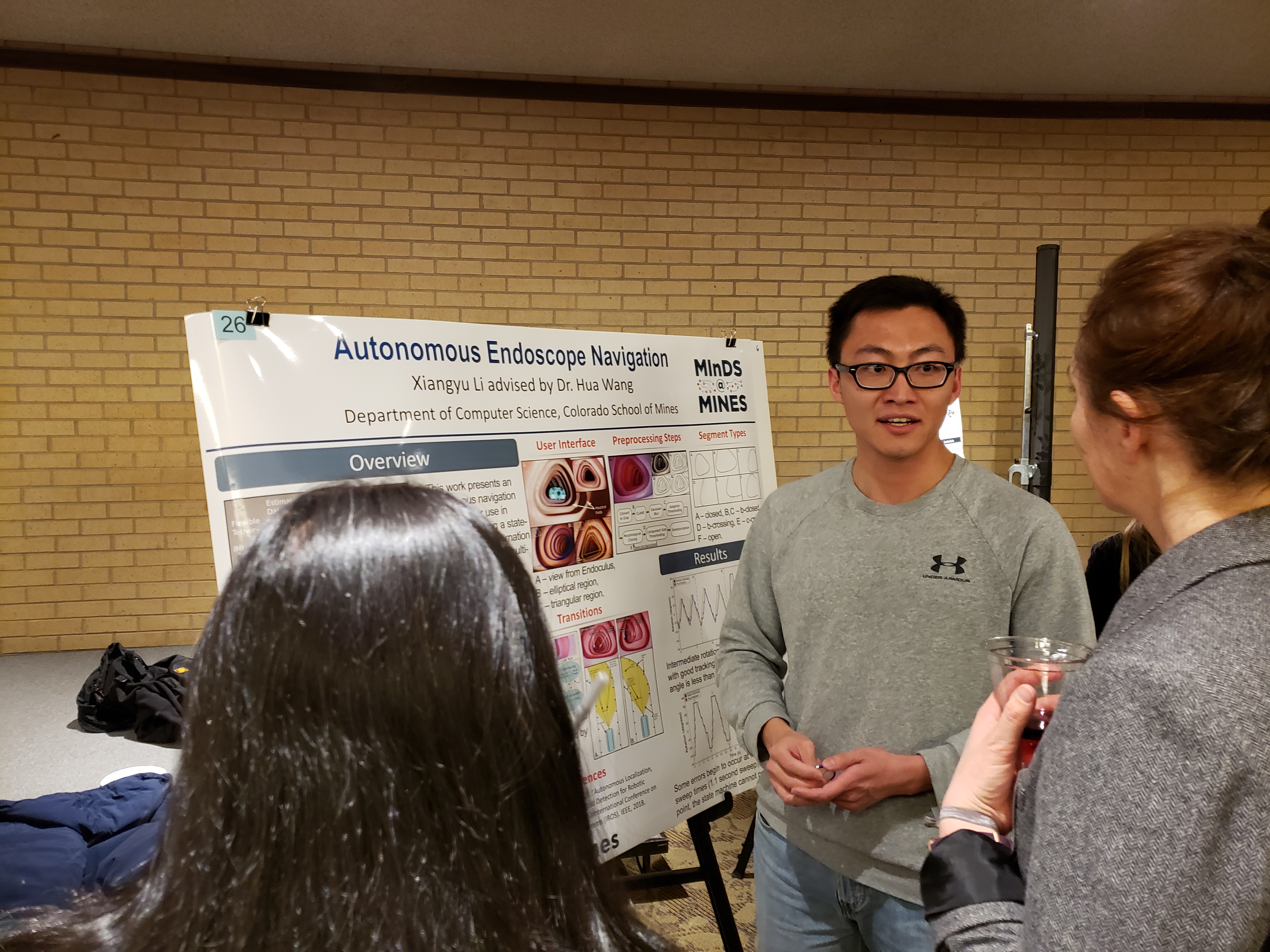Eleven MInDS@Mines Students Present Research Posters at Annual C-MAPP Event
Fri Jan 17, 2020
Eleven MInDS@Mines students presented their research to industry leaders at the annual Computing-Mines Affiliates Partnership Program (C-MAPP) event in Golden, Colorado.
This year’s event was held in the newly renovated Friedhoff Hall in Green Center.
The MInDS@Mines students who presented at C-MAPP this year are:
- Abbey Zorn
- Daniela Machnik
- Hoon Seo
- Zoe Baker
- Lodewijk Brand
- Lyujian Lu
- Matthew Miller
- Narongchai “Ball” Limpiyapirom
- Saad Elbeleidy
- Sebastian Cabrol
- Xiangyu Li
Members of the team presented applications of machine learning in bioinformatics, signal processing, additive manufacturing, and mining. The event was an opportunity for the team to network with members of industry, meet new computer science students, and present the research of students in MInDS@Mines.

Abbey explains how clustering algorithms can be used to identify key health-determining bacteria in the microbiome.

Narongchai and Daniela shows how machine learning can be used to characterize mineral distribution at the C-MAPP event.

Hoon explains how to build a simulator to train reinforcement learning agents to determine the correct clinical procedures.

Zoe, an undergraduate student supported by NSF REU Supplements, presents her research poster on different multi-task methods used to explore the relationship between nutrition, disease, and the human gut microbiome.

Lodewijk explains how tensor factorization can be used to identify signals in data stored in a multi-dimensional array.

Lyujian shows how his novel machine learning method can handle missing data when predicting an Alzhiemer's disease diagnosis.

Matt, an undergraduate student supported by NSF REU Supplements, describes a feature expansion method that can assist in the identification of physical properties associated with additive manufacturing.

Saad explains his poster about extracting nuanced relationships, using machine learning, betweens genes and diseases from literature to C-MAPP attendees.

Sebastian describes his parallel implementation of a multi-instance support vector machine to another CS student.

